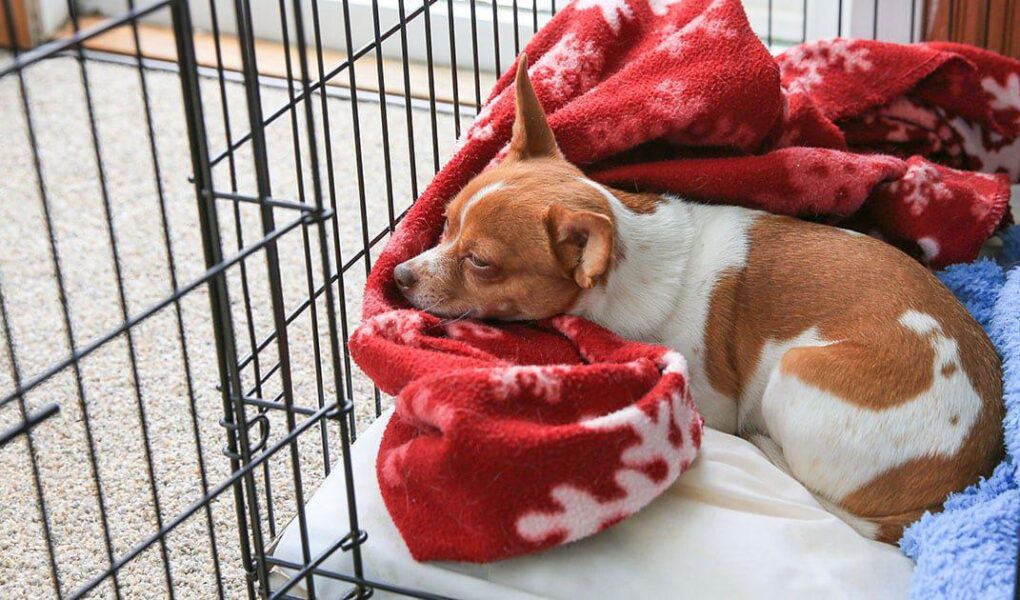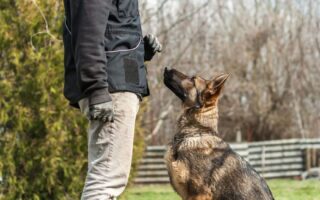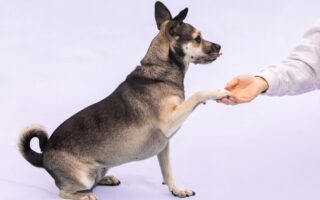Title: Navigating the Puddles: Understanding Your Puppy’s Crate Accidents
Introduction:
Welcoming a new puppy into your home is an adventure filled with joy, laughter, and the occasional mess. As you embark on this exciting journey, you may find yourself grappling with an unexpected challenge—your tiny bundle of fur has taken to peeing in their crate. While this may seem like a frustrating setback, it’s important to remember that accidents are a natural part of the learning process for any young dog.
In this article, we’ll explore the myriad reasons behind your puppy’s crate indiscretions, from developmental milestones to environmental factors. By understanding the root causes of these accidents, you’ll be better equipped to guide your furry friend toward successful crate training. Join us as we navigate the ups and downs of potty training, shedding light on solutions, tips, and the patience required in this vital stage of your puppy’s growth. After all, every puddle is just a stepping stone toward progress!
Table of Contents
- Understanding the Reasons Behind Crate Peeing
- Creating a Comfortable and Inviting Crate Environment
- Establishing a Consistent Potty Training Routine
- Tips for Managing and Preventing Crate Accidents
- Q&A
- Wrapping Up
Understanding the Reasons Behind Crate Peeing
Crate peeing in puppies can be attributed to a variety of factors, each pointing towards underlying needs or emotional states. One major reason is submissive urination, where a puppy feels the need to demonstrate submission to a perceived authority figure. This behavior is often seen in young puppies who may lack confidence or feel intimidated. Additionally, if a puppy has had negative experiences associated with the crate, such as being confined for too long or having accidents inside it, they may view the space as stressful rather than safe. Some other common causes include:
- Incomplete House Training: Puppies may not fully understand where it’s appropriate to relieve themselves.
- Anxiety: Separation anxiety can trigger accidents as the puppy feels distressed when left alone.
- Medical Issues: Conditions such as urinary tract infections can lead to frequent urination.
It’s essential to assess the specifics of the situation to address this issue effectively. Analyzing a puppy’s behavior and routine can unveil important insights. For instance, consider creating a chart to track when and how often your puppy drinks and pees. This can help identify patterns and signals indicating that they need to go outside. Below is a simple table to illustrate how such a tracker might look:
| Time | Activity | Notes |
|---|---|---|
| 8:00 AM | Woken Up | Drank water |
| 8:15 AM | Went Outside | Peed |
| 1:00 PM | Crate Time | Accident in crate |
Creating a Comfortable and Inviting Crate Environment
To ensure your puppy feels safe and secure in their crate, it’s essential to create a cozy and inviting environment. Incorporate soft bedding such as a dog blanket or a plush dog bed that provides comfort while also absorbing any minor accidents. Adding a few of your puppy’s favorite toys can help familiarize them with the space and encourage positive associations. Consider placing the crate in a low-traffic area of your home where your puppy can feel part of the family but also have a quiet retreat. Calm and gentle music or white noise can further soothe their nerves while they adjust to their new sleeping quarters.
Additionally, maintain a regular potty schedule to help prevent accidents in the crate. Puppies are biologically inclined to not soil their sleeping areas; therefore, consistency and positive reinforcement are key. You can utilize a simple chart to track your puppy’s potty habits and crate time:
| Time | Activity |
|---|---|
| 6:00 AM | Potty Outside |
| 7:00 AM | Breakfast |
| 8:00 AM | Playtime |
| 10:00 AM | Potty Break |
| 12:00 PM | Nap in Crate |
Following this structure can help reinforce the idea that the crate is a safe place, which discourages your puppy from peeing in their space due to anxiety or lack of routine.
Establishing a Consistent Potty Training Routine
Creating a consistent potty training routine is essential for teaching your puppy where and when it’s appropriate to relieve themselves. Establish regular potty breaks throughout the day, ideally after meals, naps, and playtime. This repetition helps your puppy learn to associate those moments with potty time. Consider using a specific command, like “go potty,” to reinforce the behavior you want to encourage. With patience and practice, your puppy will begin to understand that it’s time to relieve themselves when they hear the command.
Additionally, keeping a detailed schedule can significantly aid in the training process. Use a simple table to track your puppy’s potty habits, noting when they eat, drink, and relieve themselves. This will help you identify patterns and times when they need to go out. Here’s a sample schedule you might consider:
| Activity | Time |
|---|---|
| Waking Up | 7:00 AM |
| Breakfast | 7:30 AM |
| Potty Break | 7:45 AM |
| Playtime | 8:00 AM |
| Post-Play Potty Break | 8:30 AM |
| Lunch | 12:00 PM |
| Afternoon Potty Break | 12:30 PM |
By adhering to a structured routine, you help shape your puppy’s bathroom habits, minimizing accidents in the crate and fostering a sense of security. Be sure to celebrate successes, offering positive reinforcement every time your puppy successfully uses the designated potty area, which will strengthen the association between the routine and appropriate behaviors.
Tips for Managing and Preventing Crate Accidents
Crate accidents can be frustrating, but they are often a part of the learning process for both you and your puppy. To effectively manage and prevent these incidents, it’s essential to establish a consistent routine that helps your puppy understand when and where to relieve themselves. Here are some key strategies:
- Regular Bathroom Breaks: Take your puppy outside frequently, especially after meals, playtime, and naps.
- Short Crate Durations: When starting crate training, keep your puppy in the crate for short periods. Gradually increase the duration as they become more comfortable.
- Monitor Water Intake: Be mindful of your puppy’s water consumption, especially before crate time.
- Positive Reinforcement: Praise and reward your puppy every time they relieve themselves outside to encourage good behavior.
Moreover, accidents can sometimes occur due to various factors such as anxiety or a need to feel more secure. Understanding your puppy’s emotional state can greatly aid in addressing these issues. Consider implementing the following supportive measures:
| Potential Causes | Solutions |
|---|---|
| Separation Anxiety | Gradually increase crate time to help them adjust. |
| Health Issues | Consult your veterinarian for any underlying health concerns. |
| Inadequate Exercise | Ensure your puppy gets enough physical and mental stimulation. |
Q&A
Q&A: Navigating the Challenges of a Puppy Peeing in Their Crate
Q1: Why does my puppy pee in their crate?
A: Puppies may pee in their crate for several reasons—most commonly, they are still learning bladder control. At a young age, their bladders are small and unable to hold urine for extended periods. Stress, excitement, or even a simple need to relieve themselves can lead to accidents, especially if they’re not yet fully house-trained.
Q2: Is it normal for a puppy to have accidents in the crate?
A: Yes, it’s quite common for puppies to have occasional accidents in their crates. They are still adapting to their environment and learning to communicate their needs. Understanding that this is part of the learning process can help you approach the situation with patience and compassion.
Q3: How can I prevent my puppy from peeing in their crate?
A: To minimize accidents, ensure that your puppy has ample opportunities to relieve themselves before being crated. Take them outside frequently, especially after eating, drinking, or playing. Gradually accustom your puppy to the crate by providing positive reinforcement and making it a comfortable space with bedding and toys. Avoid using the crate as a punishment; instead, reinforce it as a safe haven.
Q4: Should I clean the crate differently after an accident?
A: Yes, cleaning the crate thoroughly is essential. Use an enzymatic cleaner designed for pet stains to eliminate odors that might prompt your puppy to go again in the same spot. Regular cleaning will help keep the crate fresh and prevent lingering scents that might encourage repeat offenses.
Q5: What if my puppy continues to pee in their crate despite my efforts?
A: If your puppy continues to have accidents despite your best efforts, it may be beneficial to consult your veterinarian. They can rule out any underlying medical issues such as urinary tract infections or other health concerns. Additionally, consider revisiting your crate-training approach to ensure it aligns with your puppy’s developmental stage.
Q6: How long is too long to leave a puppy in a crate?
A: The general rule is that puppies can hold their bladders for about one hour for each month of age, up to about 8 hours max for adult dogs. However, younger puppies should be crated for shorter periods. Regular potty breaks and playtime are crucial for their physical and emotional well-being.
Q7: Will my puppy grow out of this behavior?
A: With consistent training, positive reinforcement, and patience, your puppy is likely to grow out of frequent accidents in the crate. As they mature and become more comfortable in their environment, their ability to hold their bladder will improve, leading to fewer accidents.
By understanding your puppy’s needs and behaviors, you can work together to create a positive crating experience. Remember, patience and consistency are key!
Wrapping Up
while discovering a puddle in your puppy’s crate can be disheartening, it’s essential to approach the situation with patience and understanding. Accidents are a natural part of the learning process for our furry friends. By establishing a consistent potty training routine, recognizing the signs your puppy needs to go, and ensuring their crate is a comfortable and stress-free space, you can help your pup develop good habits over time. Remember, every little step forward is a victory. With a little love, consistency, and encouragement, your puppy will soon learn that outside is the place for potty time—leaving their crate as a cozy haven for rest and relaxation. Embrace the journey with your pup, and celebrate the small successes along the way!



